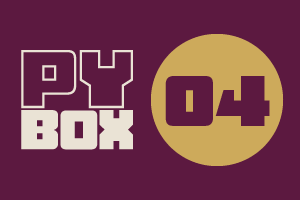Introduction
| Site: | GoLabs |
| Course: | Robotic Challenges with Python and GoPiGo |
| Book: | Introduction |
| Printed by: | Guest user |
| Date: | Saturday, 20 December 2025, 2:52 AM |
Description

This is the fourth challenge within the Robotics with GoPiGo and Python Curriculum.
Your task is to design a robot program that increases the volume of products that Amazing.com can ship out to its customers on a daily basis without increasing the number of robot pickers it employs.
Learn how to program and calibrate the Line Follower while they try to design an efficient system.
1. Stock Picking Robot Operations Manager
Online retailers store their products in vast warehouses. They often employ line-following robots to drive around the warehouse picking items off the shelves for new orders that come in.
Employing robots to do repetitive tasks frees up the human workforce to focus on more interesting tasks, such as managing and maintaining the robot operation and developing new and more efficient operational strategies.
2. Your Task: Increase the speed of the stock picking
The stock picking robot workforce at the world’s Number One online retailer, Amazing.com, is currently running at full capacity picking, packing and shipping the customer orders that it receives on a daily basis.
You have been tasked with increasing the volume of products that Amazing.com can ship out to its customers on a daily basis without increasing the number of robot pickers it employs. By keeping its operational costs low, Amazing.com can continue to offer its customers the cheapest prices on the planet.
3. Considerations
- How does a stock picker follow a line?
- What is calibration?
- Why is calibration important?
To increase the volume of products shipped out to customers on a daily basis without increasing the size of the robot workforce you must find a way to improve the stock picking efficiency of each robot.
- How can you measure efficiency?
- How do the stock pickers currently perform their job?
- Why is this inefficient?
- What strategy can you use to make the stock pickers more efficient?
4. Materials
- GoPiGo3, with batteries
- A wifi-enabled laptop or computer
- A black line following sensor
For the track:
- 5x straight & 4x corner printable line follower template sheets (download)
- black marker pen for added black contrast (if necessary)
- transparent tape for sticking sheets together
For the stock picker’s basket:
- container options: a cardboard gift box, a plastic takeaway tub or lego
- attachment options: velcro, cable ties, pipe-cleaners, string, lego rods/axles
For stock items:
- A container of small items (e.g. marbles, lego bricks)
For optional experiments:
- black and white paper or card
- a blanket, sweater, or newspaper
- a glass oven dish (larger than 24cm x 16cm)
- a clear plastic tub or lid (larger than 24cm x 16cm)
- aluminum foil
5. Vocabulary
Algorithm: A set of precise instructions that, given some set of initial conditions, can be performed in a prescribed sequence to achieve a desired goal.
Bang Bang Controller: a robotics algorithm that switches abruptly between two states. Also known as 2 step controller, or on-off controller.
Calibration : the act of checking or adjusting the accuracy of a measuring instrument, by testing it with known standards within its intended operating environment.
Code Coverage: a testing concept where every line of code gets tested, including every section of if statements (the True part and the False part).
Code Re-Use: the practice of using existing code for a new function or software.
Fail-safe: a design feature or rule that, in the event of a failure or unexpected turn of events, responds in a way that minimizes or avoids harm.
Maintainability: the ease with which a product can be modified to encounter new challenges.
Markdown: an internet language to annotate and format documents (see Wikipedia for more)
Proportional Controller: a more advanced robotics algorithm that takes into account how off-track the robot is and adjust direction accordingly.
6. Learn
These exercises will teach you what you need to know in order to succeed in the main project.
7. Main Project
After you've completed the Learn sections, you are ready for the main project.
This lesson will guide you through it: Ops Manager project
This lesson will guide you through testing your solution: Try It Out
8. Extension
If you want to go a bit further, here are two ways to go further with this project.